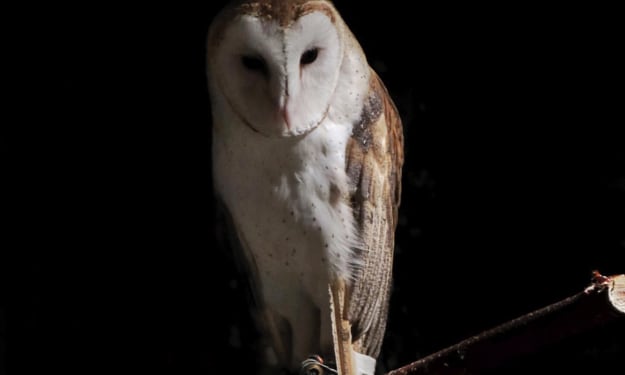A history of Dragons
An examination into the beast of olde

Since the dawn of written history, people the world over have been captivated by this majestic, mythical beast. Depending on the culture, it was said to breathe fire, embody evil, grant wishes or bring luck. Sometimes depicted as a legged winding serpent that magically floats through the air, other times it’s presented like an enormous winged lizard with sharp horns and claws. Still, other times it’s depicted as some variation between flying dinosaur and enormous sea snake. Dragons appear in every culture of the world, tucked into every nation, dating back for centuries. But where did this beast come from? Was it nothing but the aureate wiles of human imagination that dreamt up such a magnificent and daunting creature, or does it have roots somewhere in ancient history?
Some believe that Dragons were just fancifully-embellished Dinosaurs. They believe, and rationally so, that really, Dragons might not have been winged and breathed fire, but rather were simply Dinosaurs to whom humans imaginatively added extra features. A fascinating theory, but not without fault. From written, artistic and oral depictions of such fantastical beings, the dragon itself seems distinct from all others, historical or fictitious.
Let's examine some etymological roots. It was Sir Richard Owen who came up with the word “dinosaur” back in 1841. He combined the greek words “deinos” (terrible) and “sauros” (lizard). The new, hybridized result literally means “terrible lizard”. And while that certainly sounds like a possible depiction for a Dragon, the ancient history of this particular beast is far more fascinating.
To contrast the word "Dinosaur", next let’s take a look at what “Dragon” actually means. The word “Dragon” has multiple meanings. It could be a descriptor of a treacherous person, or any other formidable thing one wishes to describe. This terminology of course pulls from the fierce and fiery reputation of the dragon myths that pepper down throughout our history. However, the definition most popular today describes either a monstrous, typically winged lizard-like monster, or a serpentine beast. The archaic meaning of the anglicized word “Dragon” is “huge serpent”, which more accurately reflects the serpentine design of the ancient world.
And for ancient texts mentioning this creature, “Dragon” is mentioned in the Bible 21 times. The ancient greek word which was used in the early Biblical texts was δράκων (drákōn), which comes from δέρκομαι (dérkomai), which literally means “one who stares”, also translated “the seeing one”. This is a fascinating but equally strange description.
The oldest dragons appear in texts from the dawn of human civilization. First appearing in the historical record in writings dating back to Mesopotamia and the Vedic texts, the oldest of the dragons were Vritra, Tiamat and Kur. Vritra appears in the Vedic text of ancient India, and he is the personification of drought. In ancient Mesopotamia, water was believed to have been the birthplace of all life and, contrary to Virtra, Tiamat was the cosmic dragon who began as the goddess of the primal salty seas. As for Kur, he lived between the Earth’s crust and the primordial sea. According to the Sumerian creation story, it was Kur who stole goddess Ereshkigal immediately following the creation of the world.
In the late 10th and early 11th centuries Ferdowsi, the epic Zoroastrian poet wrote about dragons and heroes who slew them. He called these enormous creatures Azi, meaning “serpent” or “dragon”. His texts became wildly popular in the ancient world, as did the image of the dragon.
Apep/Apophis was a gargantuan Serpent of Chaos according to the Egyptian myth. The Greeks had a plethora of Dragons, among whom was Drakôn Gigantamakhios, a giant serpent thrown at the goddess Athena, who tossed him into the sky, where he formed the Draco constellation. Greece and Rome reimagined Dragons as the prototypes for what would become the classic, lizard-like European dragon we know today. They were also thought to guard treasure.
Coco was a female dragon of Portuguese mythology who battled with Saint George. When Saint George cuts off one of her ears, she is weakened, and he becomes the victor. Several other renditions and tales of Dragons exist, with perhaps less in the way of popular imagery, like the Celtic Bheithir, a dragon who used to live in a great hollow in the face of a mountain, and was tricked to walk along a bridge with hidden spikes. (Dragon fanatics mourn you, Bheithir.)
In the present day, Dragons are forefront on the fantasy scene and in pop-culture: a longstanding monument to one of the oldest mythological creatures on record. From the time humans began telling stories, they always memorialized these exotic, unbelievable beasts within them. Throughout all of Humankind’s messy journey; from Mesopotamea, to Egypt, to the Vedic Age, Greek, Roman and Meso-American civilizations, the stories of beautiful, incredible, formidable and outright terrifying Dragons have been in every written step, right beside us.
So if one day the hum-drum of life seems exceptionally lacking for action and adventure, remember that we’ve always shared a history with Dragons, and don a smile.
About the Creator
Kimberly Azarias
Azarias is a pen name I will be writing under.
I have been writing in some form for over fifteen years, love cats and am some awkward blend between rational and artistic.






Comments
There are no comments for this story
Be the first to respond and start the conversation.